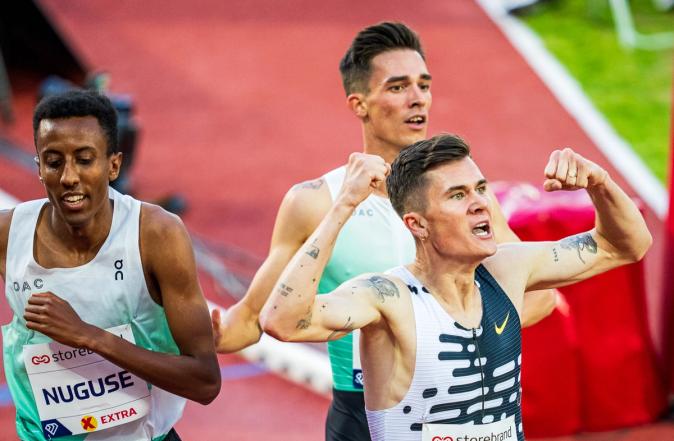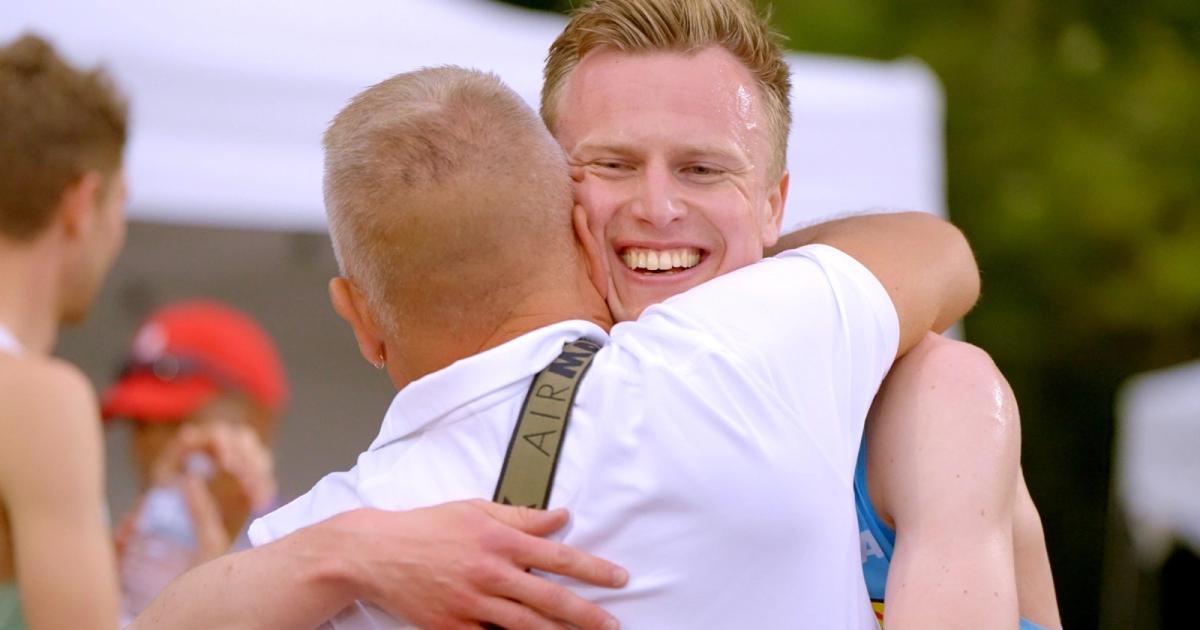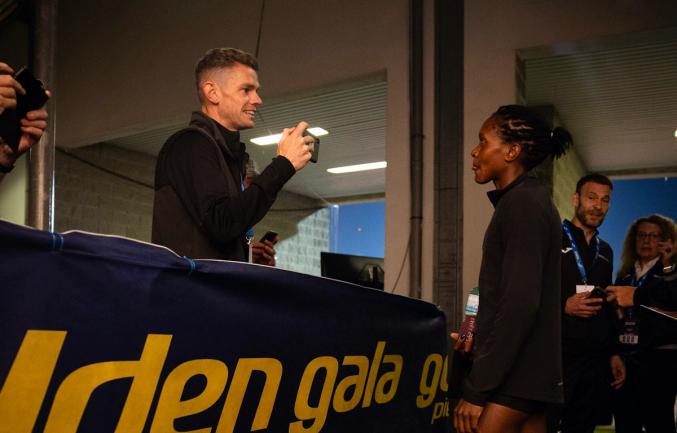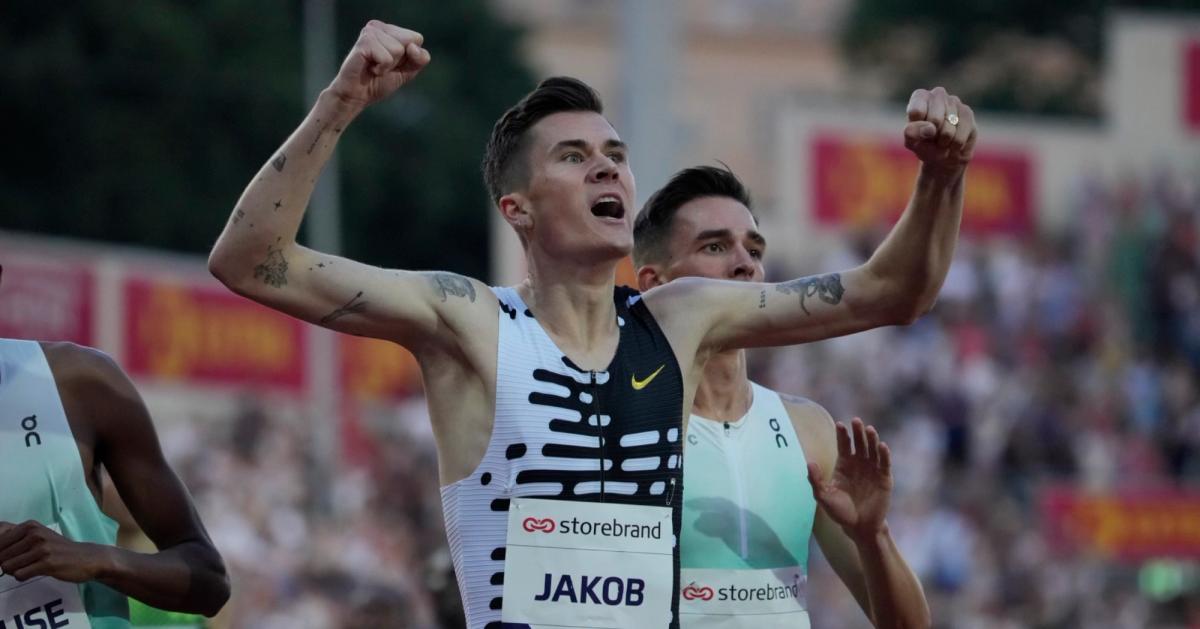By Chris Chavez
June 24, 2023
NAIROBI – On June 23rd, I woke up after a brief stay in Iten and made my way back to Eldoret and then on a quick flight back to Nairobi to start my journey back home to the United States. With more than half a day left on my first-ever trip to Kenya, I decided to pop over to Nyayo Stadium during the penultimate day of competition for the Athletics Kenya National Championships. This is not the same as the trials in July, which will determine the team for the World Championships in Budapest.
I got there a little late but former Olympic silver medalist and former world champion Timothy Cheruiyot competed in the 800m for the Kenya Prisons Service and ran 1:47.18 for the second-fastest time of the day.
This came just eight days after he ran 3:29.08 for fourth place at the Bislett Games, which is his fastest time since the Olympic final in Tokyo. It was a step forward for Cheruiyot, who is trying to get back the gold medal for Kenya in the 1500m after last year’s victory by Jake Wightman snapped a streak of five consecutive world championship gold medals.
As the meet was wrapping up, my friend Michelle Katami introduced me to coach Bernard Ouma, who oversees the training of Cheruiyot and the Rongai Athletics Club. In 2018, Jonathan Gault wrote a great profile of Ouma and his backstory. I wanted to chat to Ouma about the evolution of the 1500m, takeaways from the fast race in Oslo, and all the recent chatter about Hicham El Guerrouj’s 3:26.00 world record from 1997.
The following interview has been edited and transcribed lightly for clarity.
What has changed in the decade you’ve worked with Timothy Cheruiyot? The 1500m continues to evolve.
Timothy changed the approach to championship running, particularly in the 1500m. Running used to be very tactical. People would look at it as ‘We’ve gone through the rounds – heats, semis, and then finals – and so we’re probably tired.’ That was the perception. You’ve now seen how fast people are running in championship races. What has also changed is the progress of Timothy. It’s been very steady and very consistent. Since 2014, he’s made the national team for various championships. Every national team he’s made, he’s made it to the finals. 99% success in medaling.
2016 Olympics in particular – when Matthew Centrowitz wins the Olympic gold medal in 3:50. That was a turning point for how the race is run at championships. What are the discussions around Kenyans to not allow that to happen again?
There were mixed feelings and disappointment for Kenya. We didn’t get a medal. Of course, there was some celebration for those who made it. It was very slow – 3:50. It was slower than the Paralympics then. It was tactical…Probably it was a lapse in decision-making among the athletes. Tactics are the decisions you make when you have something to do. It played to the hands of those who knew what they were doing and those who felt strong enough to kick. (Kenya) lost it so yes, that was a turning point…Part of it is assuring that you are at your best at the championships as a whole but that you’re very strong going into the finals. If there are no niggles, we attack races with a plan. We have advanced plans going into races. I don’t fall into tactics. We go into a race with how we are. Depending on the field, if we’re feeling strong, we set up our standards and we hit it.
What does a typical week of training look like for Timothy? We’re seeing the Norwegian style of training as the trendy thing at the moment. Have you had to alter things?
We’ve done a little bit. These are human beings. Every year brings various challenges as well. Physiologically, there are a lot of demands in every event. In particular, the 1500m is a very strong race that involves a lot of shifts in between. Timothy’s week is very busy. He’s so strong. Seven days are not enough for us. He’s coming from some injuries, which he’s getting out of the way and the progression is going perfectly well. We’re going to see him peak at the World Championships, where I’m sure he’s going to medal and he needs his gold medal back. Let’s see. Those who are at the optimal state right now. There are those who are at 70-85% like Timothy. Let’s see by the world championships who will carry the day. It will be a very tough race for everyone. It’s not a walk in the park for anybody.
The Diamond League is something else. It is a pointer. We went to Oslo to do a benchmark and see where we are. This was a deep field. This was likely going to be the World Championship field. We used it to see what areas we need to accomplish in training. What do we need to add? What are we reducing? Those are the dynamics of coaching. It’s ensuring the athletes are picking things up when they’re needed to deliver.
What stood out to you from that Oslo race for the next couple of weeks of training? Timothy was fourth in 3:29.08.
It was a very close fourth. [Yared Nuguse was third in 3:29.02] It was OK to me. It was pleasing. I was very happy leaving Oslo. We could talk and I need to get feedback from them on how they’re feeling during the races. I also had to go there personally to see and talk to him about how he felt, what did he run and what were the challenges. It was a bit erratic. He was boxed at some points. He ran a very good race. If you look at his last 400m, it was actually the fastest. He had to kick from position No. 8 at 800m to position No. 4. That shows you this is somebody who is making good progress. We have work to do. We have more homework to do.
How do you as a coach help him through some disappointments like the 2021 Olympics where he was beaten by Jakob Ingebrigtsen for the first time or last year’s World Championships where he didn’t medal?
I look at athletes differently. Many people will look at them from their podium finishes – position No. 1, 2, or 3. I look at them from the background side. What luggage were you carrying along with you socially, psychologically or physiologically? Timothy had some issues with a kid being sick. He was having some issues with injuries as well and trying to get his shape back. I don’t call them disappointments. You may refer to them as disappointments if you wholistically try to group them all together. We look at where you are in the progression. There are human factors.
You may not get the very best that you’re looking for but as long as there’s a progression, that is what you need to do. It’s about how you manage victory and how you manage these so-called “disappointments” if you don’t get what you wanted. You go back and work on it. At the end of the day, this is sports. It’s about competition. It’s not life and death. The window of competition is very small. If you look at the consistency of Timothy from 2014 to 2023, then you can say that he’s a great middle distance athlete – by all standards. How many times has he beaten Jakob? 12 times. Timothy is a five-time Diamond League winner since 2016. He only last year and finished second. He has been to all the Diamond League finals.
People look for the man of the day but forget about yesterday. Depending on what you’re looking at in athletics, I look at longevity and the satisfaction they get from that – not the monetary side of it, not who is beating who today. From a deeper field, if you were a contentious person and you were enjoying the race, perfect.
Do you think people have been getting carried away with talk about the 1500m world record?
A world record requires a very long-term plan. 3:26.00 is so deep. I don’t know how genuine it was. People have their reservations. But whoever will beat it will be a very strong athlete. It takes a lot of factors to put into place. That will stay for a while. 3:27.95 for Jakob was just a drop under 3:28. Just a drop! It has to be quite significant for it to threaten the world record. It isn’t at the moment.
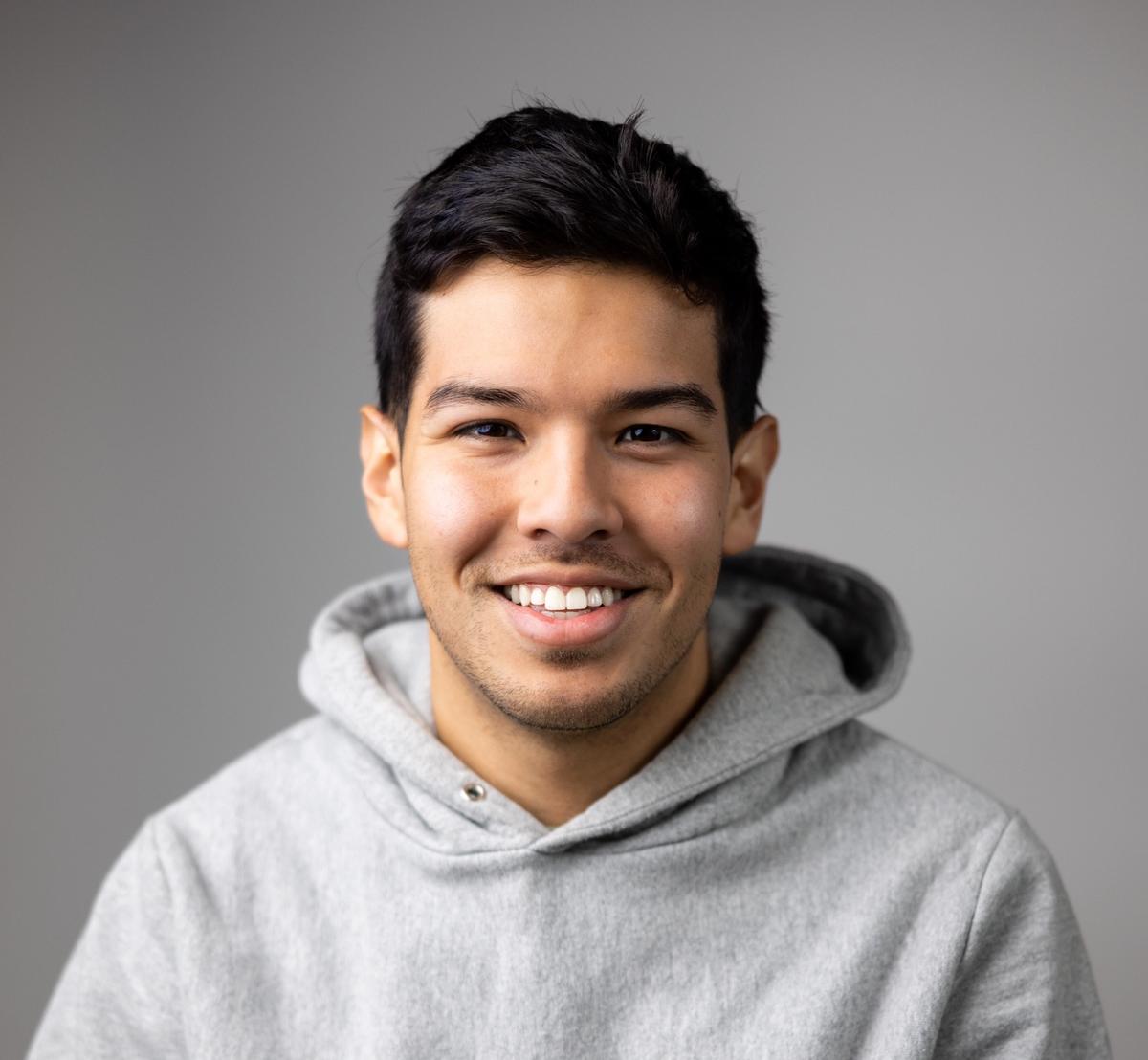
Chris Chavez
Chris Chavez launched CITIUS MAG in 2016 as a passion project while working full-time for Sports Illustrated. He covered the 2016 Olympics in Rio de Janeiro and grew his humble blog into a multi-pronged media company. He completed all six World Marathon Majors and on Feb. 15th, 2025 finally broke five minutes for the mile.

